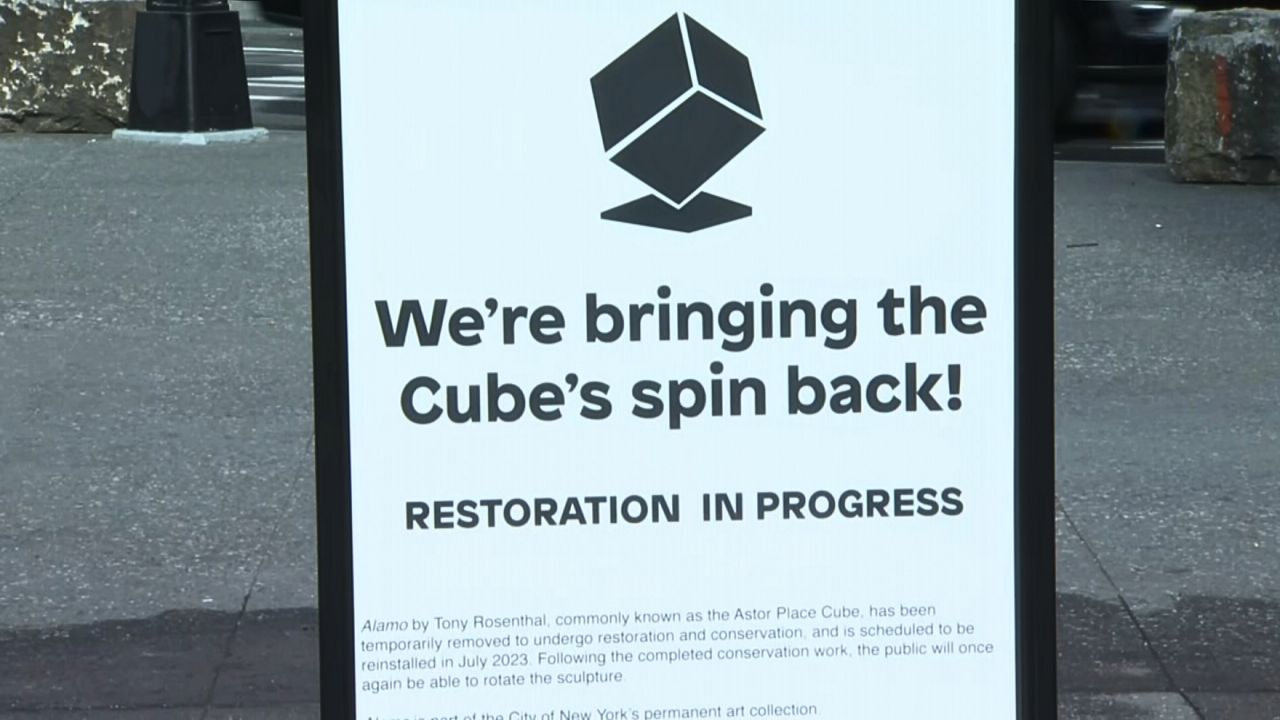The Astor Place Cube — a beloved interactive sculpture that tourists and locals alike have spun round and round for more than 50 years — was towed away by work crews Monday night, city officials said.
But fear not: the 1,800-pound cube, designed and fabricated by sculptor Tony Rosenthal in 1967, is simply set to undergo a full restoration, the city’s Department of Transportation said Tuesday.
What You Need To Know
- The Astor Place Cube is set to undergo a full restoration, the city's Department of Transportation said Tuesday
- For the last year, the mechanism that allowed passersby to spin the Cube had stopped working, the DOT said. Work crews towed the interactive sculpture away Monday night
- It is expected to return to Astor Place Plaza in the East Village later this summer, in August, after work is completed by Versteeg Art Fabricators, which previously restored the Cube in 2005
For the past year or so, the mechanism that allowed passersby to spin the Cube has not worked, the department said.
It is expected to return to Astor Place Plaza in the East Village this summer, in August, after work is completed by Versteeg Art Fabricators, which previously restored the Cube in 2005, the DOT said.
All costs associated with the restoration will be paid for by the Rosenthal estate, DOT Commissioner Ydanis Rodriguez said in a statement.
“We are delighted to share the news of The Cube’s restoration this year,” Rodriguez said. “We are especially grateful for the generosity of the family of the late Tony Rosenthal, the incredibly talented sculptor.”
“Rosenthal’s artistic vision in the 1960s has managed to capture the imagination and spirit of the whole East Village community for decades with an iconic sculpture that is best enjoyed when it is touched and spun with friends,” he added.
The Public Design Commission approved a proposal to rehabilitate the Cube in March, the DOT said.
The Astor Place Cube, also known as the “Alamo (Cube),” was originally envisioned as a temporary art installation, but locals petitioned to keep the hulking 8-foot-by-8-foot-by-8-foot sculpture in place after it became part of the fabric of the neighborhood.



